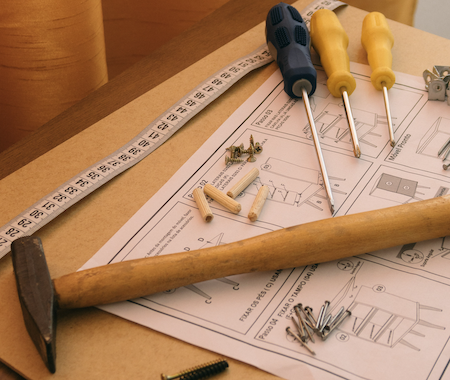
Furniture design brings
trade-off decisions. A product could be designed to be assembled and disassembled many times during its expected lifetime or could be thought to last as long as possible without any assembly operations. This doesn’t mean that the second is less circular than the first one. There is the need of a complete evaluation according to the different
circularity aspects.
In this context, the new voluntary standard EN 17902 aims to support the furniture manufacturers in aligning their product with the circular development schemes. This because those schemes allowed the development of more durable products and the extension of their lifetime, keeping their value in the economy as long as possible. Through
assembly and disassembly operations the reuse, remanufacturing and recycling (as few examples) are made possible.
Considering the
durability as a central characteristic for a
sustainable furniture, the evaluation on the simplicity of dis/re-assembly is made through
priority parts. These are furniture’s parts that, for function or behavior could forbid its prolonged use. The function priority parts are for example the doors of storage furniture or the adjustable armrest of a chair. The break or failure of these parts could lead the end user to the products substitution. Near the functional aspect there is also the visual appearance of the product. For this reason, all the visible surfaces of the furniture which degradation could affect the substitution are considered as priority parts.
The non-destructive dis/re-assembly easiness of priority part is evaluated through
criteria.
These, consider the availability and content of the instruction, the number and the skill level of operator, the number and diversity of tools required, the type of fasteners used in furniture and their reusability, the number of steps needed for the assembly/disassembly of each priority part and the requirement of a particular working environment. All the criteria are divided in level from the preferable
Class A to
Class C (
or even D in some cases). This subdivision could help manufacturers to understand their own state of art. Which are the product’s strengths? Which the weaknesses? How the latter one could be improved to concur in the design of products more and more circular?
The final aim is therefore to
provide a practical tool to furniture manufacturers for the purposes of circular design, so that the sector is ready to welcome the new challenges of the soon-to-be-published European product sustainability regulations and directives.
For info:Matilde Ceschia
+39 0432 747241
ceschia@catas.com

 Furniture design brings trade-off decisions. A product could be designed to be assembled and disassembled many times during its expected lifetime or could be thought to last as long as possible without any assembly operations. This doesn’t mean that the second is less circular than the first one. There is the need of a complete evaluation according to the different circularity aspects.
Furniture design brings trade-off decisions. A product could be designed to be assembled and disassembled many times during its expected lifetime or could be thought to last as long as possible without any assembly operations. This doesn’t mean that the second is less circular than the first one. There is the need of a complete evaluation according to the different circularity aspects.